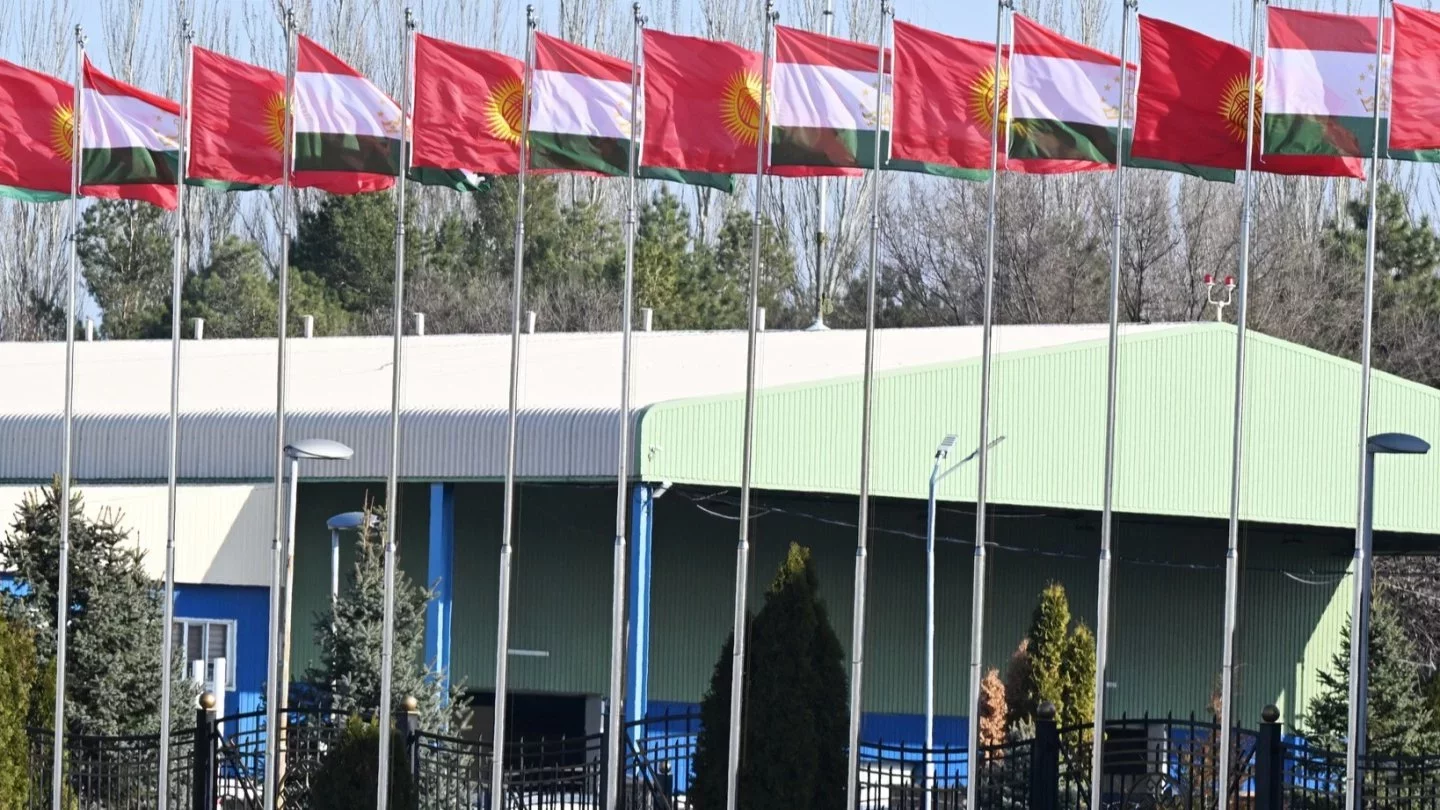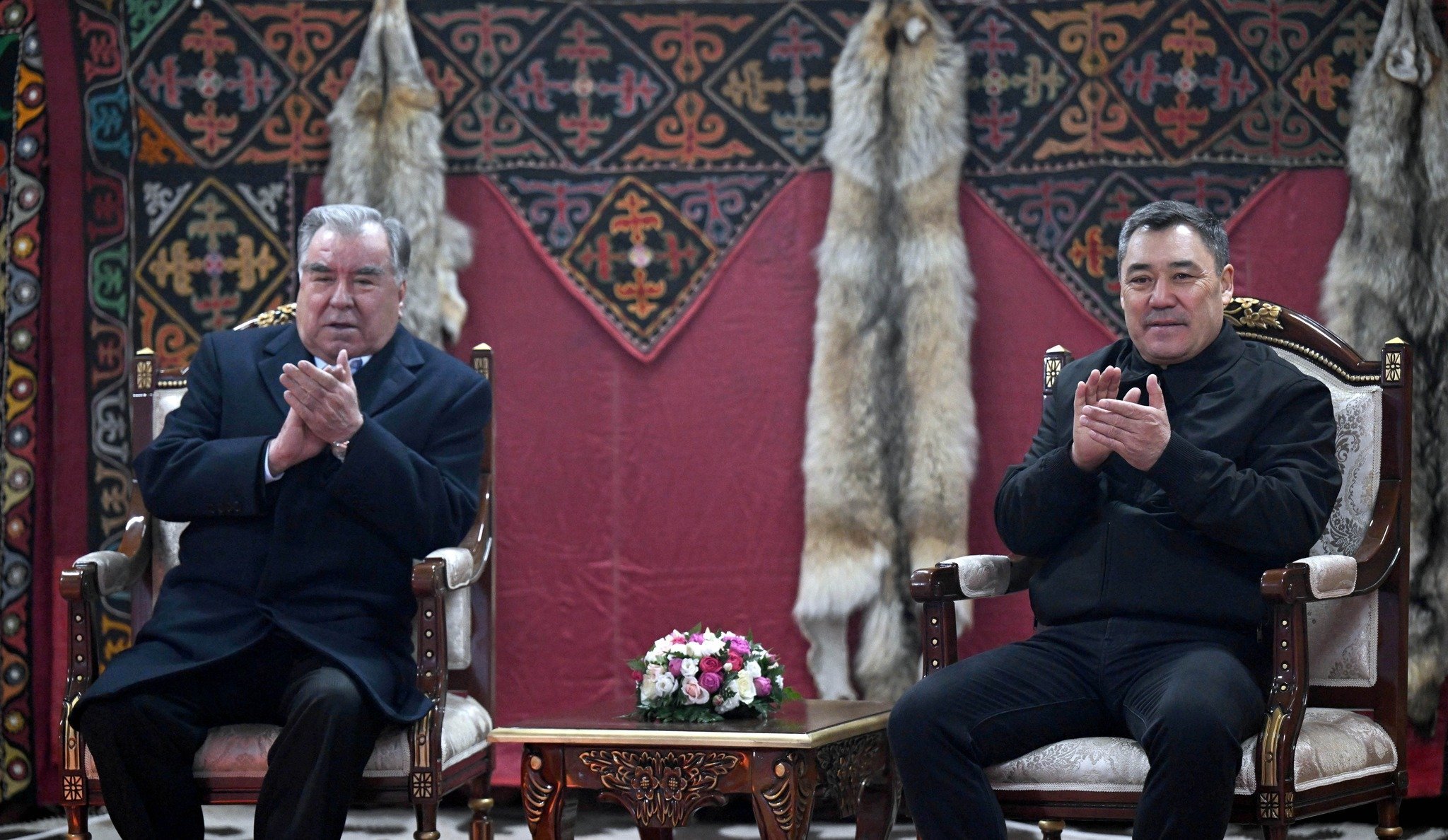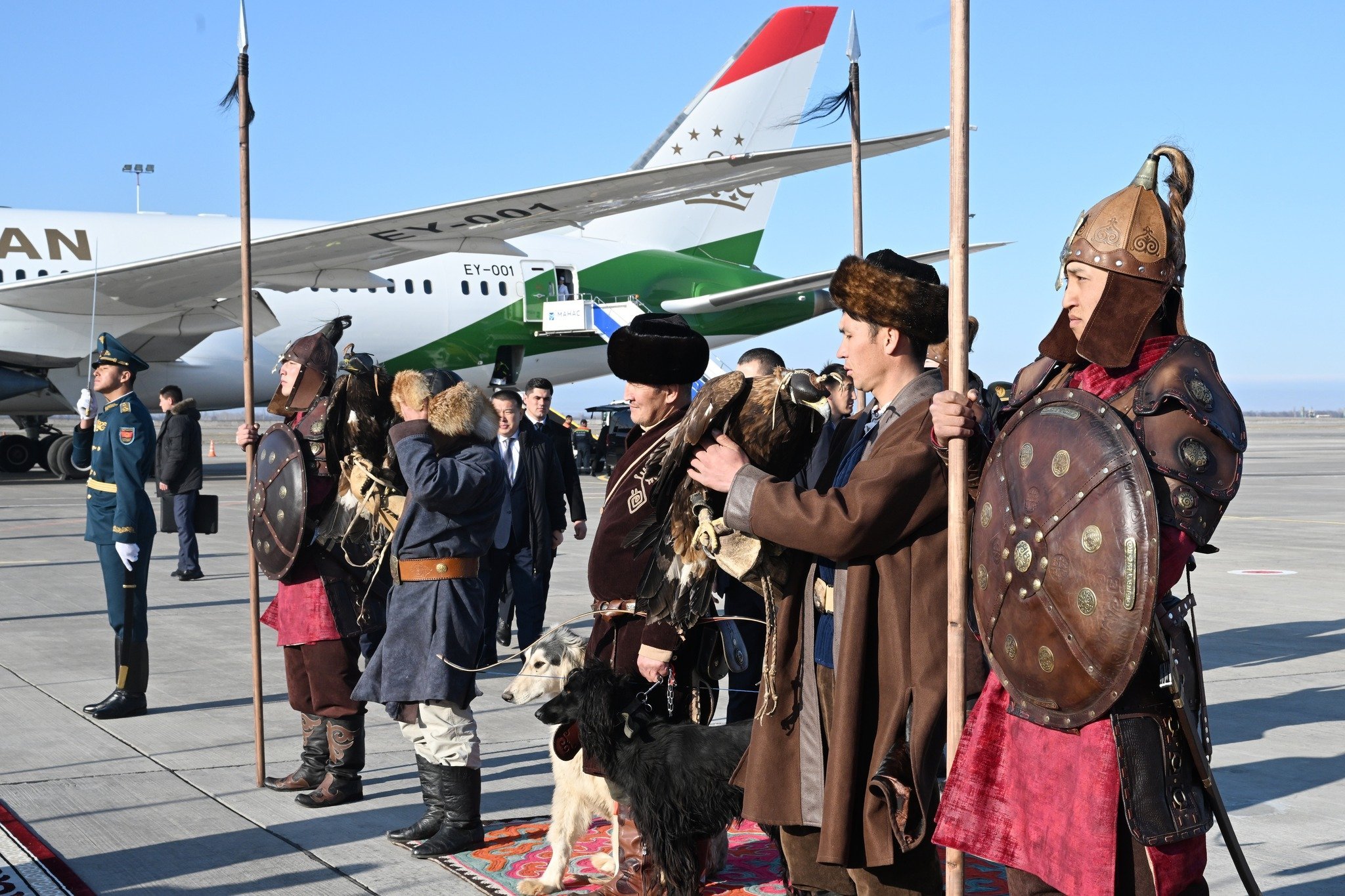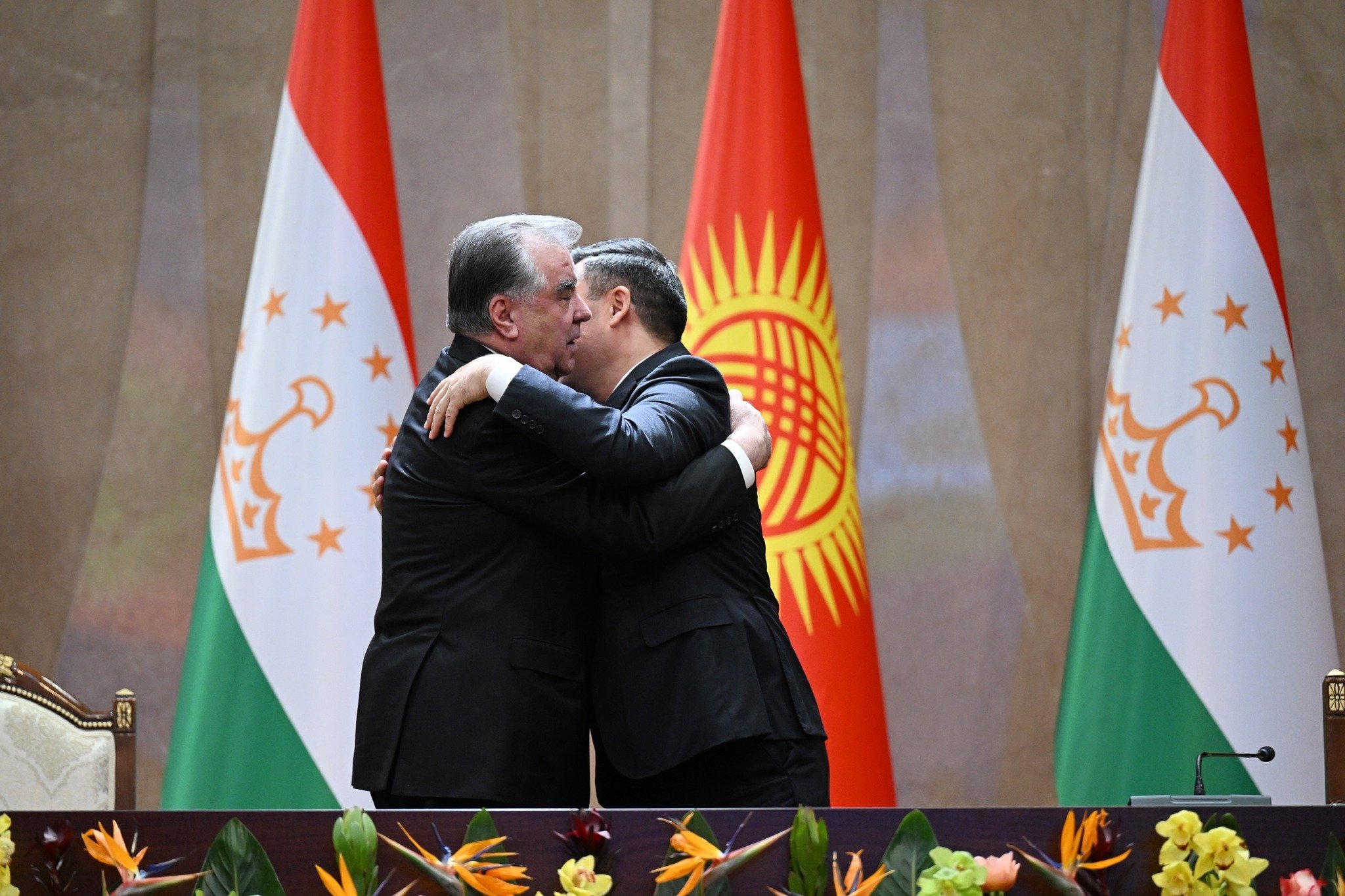"Better to Stick Together": How Kyrgyzstan and Tajikistan Reached Peace
 Photo: Press Service of the President of Tajikistan
Photo: Press Service of the President of Tajikistan
After more than a decade of violent clashes, deep scars remain on both sides. Yet, both governments have finally concluded that prolonging this conflict is too risky, not just for their republics but for the entire region. And this time, they struck a deal without outside mediation.
Orda.kz explores the implications of the Kyrgyz-Tajik agreement and what it means for the future of their relations.
Long Ago...
Fifteen years ago, the Kyrgyz-Tajik border was not a place of conflict but of shared community life. There was even a casino, which later transformed into a wedding hall. At the time, Tajikistan had strict limits on wedding guest numbers (no more than 150 people), while Kyrgyzstan had no such restrictions.
Many Tajik families used the restaurant to host celebrations with up to 500 guests.
Weddings turned into Kyrgyz-Tajik festivals, as mixed families and neighbors celebrated together.
No one imagined that just a few years later, that very restaurant would be burned down, and the once-open roads would be closed off by military checkpoints.
The escalation began in 2011, and since then, violent incidents occurred frequently, with both border guards and civilians losing their lives. According to the Tajik Ministry of Foreign Affairs, 230 armed conflicts have occurred here since 2012.
The most serious clashes were in September 2022, with over 100 people killed on both sides, hundreds wounded, and thousands displaced.
The roots of this dispute date back even further — to the Soviet Union, where similar clashes occurred in the 1970s and 1980s. Then, as now, the core issue was land and water rights.
The conflict was further complicated by Vorukh, a Tajik enclave inside Kyrgyzstan, home to around 45,000 people. Nearby villages were arranged in a checkerboard pattern, making separating the two populations cleanly impossible.
Why Now? The Key Factors Behind the Agreement
For decades, negotiations failed.
Everything took so long because, at first, the conflicts were relatively low-intensity, only reaching a breaking point in 2021 and 2022. Secondly, Kyrgyzstan now has a more decisive government that, for various reasons, has managed to consolidate control over social movements and political resources, preventing destabilization. On top of that, the broader international situation also played a role — ongoing crises in Azerbaijan, Afghanistan, and especially Ukraine added to the urgency of resolving regional disputes.says political scientist from Kyrgyzstan Emil Juraev.
Tajik political analyst Parviz Mullojanov echoes these sentiments, stating that both sides realized escalation could lead to full-scale conflict, forcing them to compromise:
Tajikistan and Kyrgyzstan both realized that prolonging the conflict was pointless, made concessions, and showed political will to resolve the issue. Both sides understood that further escalation could push the situation to a new level and potentially lead to open conflict between the two countries.
Kazakhstan benefits significantly from this agreement, as stability in Central Asia is crucial for a country that shares the longest border with an increasingly unpredictable Russia.
Temur Umarov, an expert at the Carnegie Berlin Center, points out that border conflicts in this region primarily stem from resource disputes rather than ideological or nationalistic differences.
"But in recent years, the conflicts have spiraled out of the control of both governments. This happened because the authorities in both Tajikistan and Kyrgyzstan used these disputes to rally public support, which only escalated tensions," Umarov explains.
Experts agree that the breakthrough was possible because both countries recognized the need for compromise.
According to an agreement revealed in late February by Kamchybek Tashiev, head of Kyrgyzstan’s State Committee for National Security, the two nations agreed to a land swap. They designated the most contentious sites along the border — such as the road leading to the Vorukh enclave and a key water intake facility — as neutral zones.

Notably, Russia, the OSCE, and the CSTO had previously attempted to mediate the Kyrgyz-Tajik dispute. However, both Bishkek and Dushanbe consistently rejected outside intervention, ultimately reaching an agreement on their own.
As far as I remember, Dushanbe never wanted a third party involved in negotiations. Without mediators, neither side can later blame the third party and claim they were pressured into concessions, explains Kyrgyz political scientist Emil Juraev.
Another expert, political scientist Ilyas Kurmanov, emphasizes that the agreement aligns with international legal standards:
Border agreements should always be negotiated directly between the two governments, behind closed doors. Bringing in third parties or inexperienced mediators often complicates matters rather than resolving them.
How Do Border Residents Feel?
The newly brokered peace is met with cautious optimism for those living in the border villages. While Kyrgyzstan and Tajikistan have reopened border checkpoints and resumed air travel — both suspended since 2021 — the real test lies in implementing agreements and tangible steps from the authorities.
Of course, we're all relieved that an agreement has finally been reached — no more bloodshed or closed borders. We can trade with each other again. But after the initial joy fades, people are starting to worry about what comes next. Many are anxious about how the government will handle resettling those whose homes now fall within the neighboring country’s territory.says a resident of Vorukh, who requested anonymity.
He explains that many in his village had hoped the road to the enclave would remain under Tajikistan’s control.
But now it’s been designated as neutral territory, and if the agreement isn't upheld, Vorukh could once again find itself cut off,he warns.
Across the border in Kyrgyzstan, the response to the peace deal is similarly cautious. Gulbarchyn Amirova, a journalist from the Batken region, notes that it will take time for people to rebuild the relationships that deteriorated during the height of the conflict.
The borders are open again, and many have finally reunited with their daughters and relatives. Everyone was waiting for this moment. But only time will tell what happens next,she says.

The journalist recalls that trade between Kyrgyz and Tajik communities thrived before the border clashes.
Kyrgyz farmers sold their goods to Tajik people, while Tajik laborers worked in Kyrgyz fields and on construction sites. But after the borders closed, Uzbek traders stepped in to fill the gap between the two nations.
We started trading with the Uzbeks instead. But things became more difficult — finding workers for the fields and construction sites was challenging. We hope that over time, things will return to normal. The most important thing is that we have reached an agreement, says Amirova
What Comes Next?
According to analyst Temur Umarov, the prospects for lasting peace now outweigh the risks of renewed conflict.
The key factor is the shifting dynamics within Central Asia. With the war in Ukraine and broader geopolitical tensions, regional states have realized that cooperation is more beneficial than conflict,Umarov explains.
Kyrgyz political expert Emil Juraev emphasizes the need for authorities to handle border communities carefully, given how deeply the changes will impact daily life.
We are talking about a very densely populated area. This will not just be a theoretical definition of the border; it will directly affect people's lives. They have lived here for several generations, and when it comes to their resettlement, it is important to convey to people the need to pay this price,Juraev says.
Tajik analyst Parviz Mullojanov agrees, adding that while reaching the agreement was difficult, ensuring its implementation will require continued effort:
This was a highly complex process, involving numerous meetings and detailed negotiations. Now, both sides must focus on enforcing the terms. However, given the strong political will in both countries, I believe the agreement will be successfully upheld.

Political analyst Ilyas Kurmanov views the agreement as a landmark moment for Kyrgyzstan:
We inherited administrative borders from the Soviet Union, but back then, the focus was only on external boundaries. When the newly independent states emerged, it became clear that each nation needed clearly defined legal borders. After all, the fundamental elements of a state are government authority, civilian population, and internationally recognized territory.
Kurmanov notes that once both parliaments ratify the agreement, the relevant documents will be submitted to the UN General Assembly. If any party violates the terms, the international community could step in and apply pressure using diplomatic tools.
For residents of border villages, the primary source of security remains their governments. After years of conflict, many are willing to accept compromises — as long as officials avoid taking an uncompromising, hardline stance that could reignite tensions.
Original Author: Liliya Gaysina
Latest news
- Authorities Tighten Rules for Submitting Petitions
- Deputy Interior Minister Declines to Call Orda.kz Searches Illegal
- Koshanov Calls for Concrete Results After Review of Public Concerns
- Pavlodar Activist Fined for Alleged Dissemination of False Information
- Press Freedom Groups Condemn Searches, Charges Against Orda.kz Editor
- Besagash Residents Make Appeal Over Alleged Illegal Construction in Protected Area
- Uzbekistan and Afghanistan Resume Civilian Border Crossings for the First Time Since 2021 — Chamber of Commerce
- Kazakhstan Says AZAL Plane Crash Investigation Nears Final Stage
- Taliban Foreign Ministry: Tajikistan and Afghanistan Discuss Border Situation
- Citizen of Kazakhstan Detained After Disrupting Live Broadcast at St. Petersburg Radio Station
- Ministry of Energy Clarifies Process for Setting Electricity Rates for 2026–2032
- Shymkent Residents Report Persistent Smog and Gas Odor Across the City
- A Month After the Tyulkubas Shooting, Residents Still Have No Answers
- Putin Meets Kushner and Witkoff in Moscow, but No Breakthrough on Territorial Issues
- “Birthday Gift”: Bishimbayev’s Ex-Wife Says He Has Filed Two Legal Claims Against Her
- How the Ministry of Culture Interprets LGBTQ+ “Propaganda”
- Bazhkenova Sends Message From House Arrest, Lawyer Files Complaints Over Police Actions
- Crime Without Punishment: Who in Kazakhstan Is Lobbying Sanctioned Russian Companies Under the UAS Banner
- Türkiye Cuts Russian Oil Purchases, Boosts Imports of Kazakhstan’s CPC Blend
- Vlast.kz Website Unstable After Massive DDoS Attack

